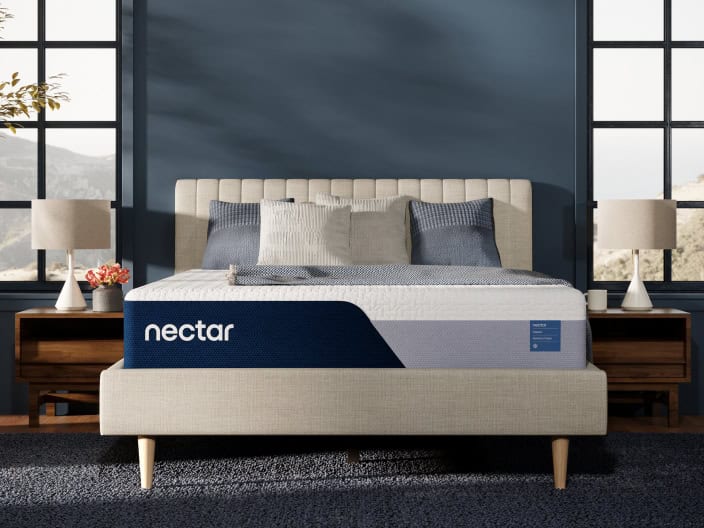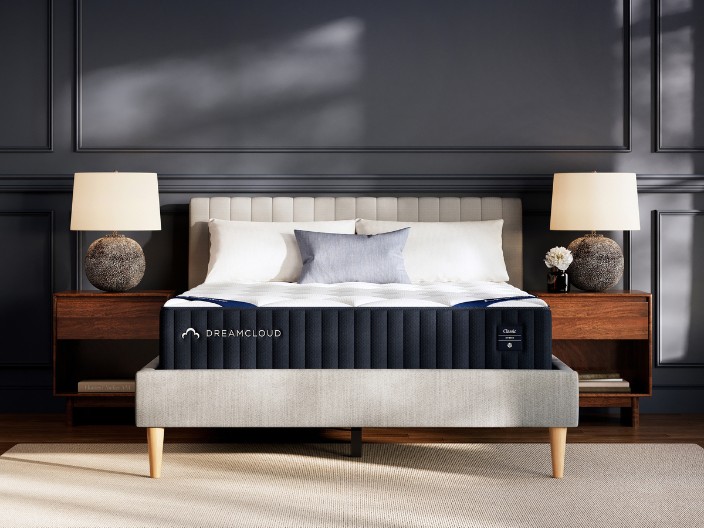Parasomnias: Types, Symptoms, & Causes
Share
Fact checked
Reviewed by experts
Updated
January 9, 2023
Quick read
6 mins to read
List of Content
Sleep disorder is when an individual experience changes in their sleeping patterns or habits that can negatively affect health. One such sleep disorder is parasomnia.
Parasomnia is a sleep disorder involving unusual and undesirable physical events or experiences that disrupt sleep. Although parasomnia is a common disorder, it is important to be educated for the safety of yourself and those around you.
What Is Parasomnia
Parasomnia encompasses a spectrum of unusual and undesirable physical events or experiences that disrupt sleep. It is a sleep disorder of unwanted physical events or experiences that occur during sleep initiation, during sleep, or during arousal from sleep.
Some behavioral manifestations of parasomnia include sleepwalking, sleep terrors, sleeptalking, and sleep paralysis, which can be distressing for the individual experiencing it and their bed partner. Even though parasomnia is more common in children, it can occur at any age.
Types of Parasomnia
There are different types of parasomnia, and each parasomnia carries distinct symptoms and diagnostic criteria. These behaviors can be categorized into sleep stages: NREM-related, REM-related, and “other.”
NREM-Related Parasomnias
Non-REM sleep includes light and deep sleep, accounting for about the majority of your sleeping time, approximately 75% of the sleep. It encompasses three sleep stages in the following order: N1, N2, and N3.
Non REM parasomnia is a disorder with mysterious neurobiological substrates. The conditions are severe, with social, personal, and forensic implications. Non REM parasomnia can be triggered by factors causing an increase in deep sleep (sleep deprivation) or sleep disruption (stress), and symptoms vary over time.
It encompasses unwanted night-time disorders of arousal (DOAs) such as sleepwalking, sleep terrors, and confusional arousals, which are thought to be due to incomplete awakening from deep NREM sleep, as well as lesser-known entities such as sleep-related sexual behaviors and eating disorders.
Sleepwalking
Sleepwalking is thought to be a common arousal disorder characterized by partial arousal during non-REM sleep. Sleepwalking can lead to potential adverse health outcomes, such as injury to the sleepwalker or others due to impaired perception. And according to study reports, the current rate of sleepwalking is higher in children than in adults.
Sleep Terrors
Sleep terrors are early childhood parasomnia. Screams or cries, behavioral manifestations of extreme fear, difficulty waking, and inconsolability upon awakening characterize them. Although research has demonstrated that night terrors are most common in children between 1 and 5 years of age.
Confusional Arousals
Confusional arousal is considered as parasomnia, which refers to when a sleeper appears to wake up, but their behavior is unusual or strange. The individual may feel disoriented, unresponsive, have slow speech, or confused thinking, such as not knowing where they are or what they are doing. Furthermore, confusional arousals are highly prevalent in the general population.
Sleep-related Sexual Behaviors
Sleep-related abnormal sexual behaviors, also known as sexsomnia, are classified as a subtype of non REM parasomnia. It can be associated with other sleep disorders, such as restless legs syndrome and obstructive sleep apnea (OSA), which promote arousal from NREM sleep with partial awakening. Individuals with sexsomnia perform sexual activities while asleep.
Sleep-related Eating Disorders
Sleep-related eating disorder (SRED) is a combination of parasomnia and an eating disorder characterized by recurring eating events during the transition from night-time sleep to arousal. It is associated with psychotropic medication, particularly sedative-hypnotics, including parasomnias, narcolepsy, and restless legs syndrome.
REM-Related Parasomnias
Rapid eye movement (REM) sleep occurs following the NREM stages. And in human adults, REM sleep was correlated with specific brain-wave patterns and dreaming occurred during periods of sleep with rapid eye movements. It is also when nightmares can occur.
REM sleep accounts for about 25% of sleep and usually starts 90 minutes after the sleep, and later each of the REM cycles gets longer throughout the night. The first cycle generally lasts 10 minutes, with the final cycle lasting up to an hour.
The REM-associated parasomnias include nightmares, REM-sleep behavior disorder, and hypnagogic and hypnopompic hallucinations.
REM-Sleep Behavior Disorder
One of the cardinal features of REM sleep is the active inhibition of skeletal muscle during REM sleep. And REM-sleep behavior disorder is a sleep disorder in which the sleeper physically acts out vivid and often unpleasant dreams with vocal sounds. It may sometimes include sudden and often violent arm and leg movements during REM sleep. This behavior is also called dream-enacting behavior.
Nightmares
A nightmare is a disturbing dream associated with negative feelings, such as anxiety or fear, that awaken the sleeper from REM sleep. Dream content most frequently involves imminent danger; attacks or pursuit are common themes, with fear and/or anxiety being the most frequent emotions associated with nightmares. Sometimes sadness, anger, and dysphoria may also be included.
Contrary to sleep terrors, which may evolve into sleepwalking, nightmares are not associated with confusion or disorientation. The individual having a nightmare can relate dream content and associated fear and anxiety upon awakening.
Hypnagogic and Hypnopompic Hallucinations
Hypnagogic hallucinations are vivid perceptual experiences occurring at the onset of sleep, and hallucination upon awakening is called hypnopompic. The hallucinations can be pleasing or frightening and are often visual, but they can be auditory, tactile, or cenesthopathic (abnormal sensations).
Other Parasomnias
Behaviors that occur during the transition between sleep or wakefulness, as well as those that can occur during NREM or REM sleep, is parasomnia definition.
Exploding Head Syndrome
Exploding head syndrome (EHS) is a benign parasomnia. It is characterized by the perception of a loud sound while asleep, which leads to abrupt awakening. It usually occurs during the wake-sleep/sleep-wake transition, lasts less than a second, and is often accompanied by flashes of light and patient distress, but there is no significant associated pain.
Sleep Enuresis
Sleep enuresis or nocturnal enuresis is known as bedwetting worldwide. It is defined as night-time bedwetting in children five years or older and is a common condition that can cause substantial psychological distress in children. Moreover, there are three commonly proposed mechanisms for bedwetting: excessive nocturnal urine production, bladder overactivity, and a failure to awaken in response to bladder sensations.
What Are the Causes of Parasomnias
Find the explanation of what causes parasomnia.
- Parasomnia may occur alone or with the onsetting of trauma, psychiatric illness, other sleep-related disorders, Parkinson’s disease, and spinocerebellar ataxia (a group of inherited brain disorders).
- Parasomnia is more frequently seen in children with underlying neurologic and psychiatric issues like epilepsy, ADHD, or developmental issues.
- Parasomnia can be triggered by sleep deprivation, sedating medications, and sleep fragmentation, including restless leg syndrome, periodic limb movement, and obstructive sleep apnea.
- Parasomnia can also be triggered by febrile illness, substance abuse, and alcohol.
What Are the Symptoms of Parasomnias
Each type of parasomnia has its unique features and triggers; some of the common parasomnia symptoms include:
- Abnormal behavioral manifestations include sleepwalking, sleep terrors, sleeptalking, and sleep paralysis.
- Awakened from sleep, confused, or disoriented.
- Finding injuries on your body for which you don’t remember the cause from sleepwalking.
How Are Parasomnias Treated
Parasomnia treatment starts with identifying and treating other related sleep problems and health issues and reviewing medications that may trigger the parasomnia. Following are some general management strategies for Non-REM and REM sleep disorders.
- Educate the patients and their bed partners about environmental safety methods.
- Lock the windows and install bedroom door alarms for sleepwalkers.
- Avoid substance use.
- Get the recommended hours of sleep.
- Follow proper sleep hygiene.
How Are Parasomnias Diagnosed
For the evaluation of parasomnia, clinicians often draw out a detailed sleep history by the patient and, if possible, by their bed partner. They also enquire about the underlying medical history, family history, history of substance abuse, and current medications.
Apart from these, other sleep disorders tests include overnight sleep study or polysomnography (PSG) and video electroencephalography (EEG). This will help identify parasomnias and detect any underlying sleep disorders contributing to sleep fragmentation and possible parasomnia.
When to See a Doctor
Contact your healthcare providers if you or your family members experience any abnormal sleep-related behaviors, especially those associated with injuries or sleep disruption.
Conclusion
Parasomnia is a sleep disorder involving abnormal behavior during sleep, such as walking or talking. And is categorized into groups by the stage of sleep in which they happen, that is, NREM-related, REM-related, and “other.” Each type of parasomnia has unique features and triggers, so contact your healthcare providers if you or your family members experience any abnormal sleep-related behaviors.
FAQs
Parasomnia can be triggered by sleep deprivation, sedating medications, and sleep fragmentation.
Some of the parasomnia symptoms include abnormal behavioral manifestations such as sleepwalking, sleep terrors, sleeptalking, and sleep paralysis; waking up confused or disoriented; or finding injuries on your body for which you don’t remember the cause of sleepwalking.
Sleep-related abnormal sexual behaviors are also known as sexsomnia; it is classified as a subtype of non-rapid eye movement (NREM) sleep parasomnia, characterized by nocturnal sex outside of awareness.
It is possible if the individual suffers from sleep non REM parasomnia, known as sexsomnia. Because people with sexsomnia experience sleep-related sexual behavior, ranging from masturbation to sexual intercourse.
It might not be normal for girls because it is more common in men (11%) than in women (4%), according to a new study.
This website does not offer medical advice nor professional medical services; rather, it is provided solely for educational, informational, and/or entertainment purposes. Individuals seeking medical advice should consult a licensed physician. The information provided should not be used for diagnosis or treatment of any condition, disease, or injury. When you have a medical condition, you should always talk to licensed doctor or other certified medical professional. You should never delay seeking professional medical advice or treatment based on the contents of this website. Call 911 or immediately go to the nearest emergency room if you think you may have a medical emergency. The contents of this website are provided “as-is”, Sleep Authority and its parent, subsidiaries, affiliates, employees, contributors disclaim any warranty of the information contained herein. Please contact using contact form to report any errors, omissions, misinformation, or abuse.









